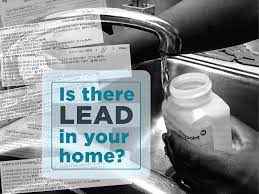Rosson stated Monday that “this whole Back to Business name if there aren’t businesses to go back to” Rosson claimed that she received very little information about her application seven weeks after she applied. She also deals with many small businesses within the same industry. Rosson stated that she is seeing many of these businesses close each week. “… Although I don’t manage the chamber of commerce, I think we could see 20-30% closing in Oxford if nothing happens.” Mississippi, along with most other states, has been trying to make use of some federal COVID-19 money to aid small businesses. In May, the Legislature passed emergency grants for small businesses. The program began June 11. It has taken a long time to get the money to the businesses. After a significant spike in approvals last week, less than 8% had been approved for grants as of Aug. 28. About 1% of the money was distributed as of August’s beginning. Mid-August, a Hope Policy Institute analysis found Mississippi trailed other Southern states in deploying CARES Act funds for small businesses. This despite the existence of another program that provides $2,000 in emergency grants to companies shuttered by mandated shutdowns during the pandemic. Mississippi’s average amount of relief at that time was $1,884 – lower than the average for other states like Alabama, which averaged $12,184. Mid-August saw Jackson’s lawmakers return to Jackson to make changes to the program. They relaxed qualifications and increased the potential payments to help businesses in the face of the pandemic. The Back to Business grant program is managed by the Mississippi Development Authority. This private contractor was used to run the program. They promise to move faster. John Rounsaville, MDA Director, stated that while the review process can be time-consuming, they are currently reviewing 600 applications per day to issue payments as quickly as possible. “We’ve actually processed 1,076 payments (Friday),” said John Rounsaville, Director of MDA. Governor. Tate Reeves said Monday that the administration of the Back to Business grants was “constrained by U.S Treasury guidelines and some by language the Legislature adopted.” Rosson is concerned that the program will not move quickly enough to assist businesses in the most critical need. Rosson’s company 662 Marketing advertises and markets college town small business services to parents, including Starkville and Oxford. Rosson is dependent on small businesses and universities, both of which were severely affected by the pandemic. Rosson applied for the Back to Business grant in July 2009. Rosson applied for a Back to Business grant on July 9. Rosson stated that she had paid all her taxes on time. I’m sending them the attachments. They are digitally and printed. Rosson stated that she was forced to lay off two of six employees because they couldn’t find them. Rosson stated that if the money doesn’t arrive, we’ll have to make further changes. She also said that she has to look at what four months from now will look like. Grant programs are moving slowly. The legislature approved $300 million in CARES Act funding in May for two Mississippi small-business programs. The first, which was funded at $60million, would provide $2,000 grants to more than 29,000 businesses that were closed temporarily due to the pandemic. The checks were to be sent by the state Department of Revenue to a large number of small businesses, including clothing shops, barber shops, and restaurants. DOR reported on Aug. 28 that it had only issued 14,106 grants, totaling $28.2million. The only condition for receiving $2,000 emergency grants is that the businesses must have filed their 2018 and 2019 state income tax returns. DOR reported that 25% of those on the initial list had not filed their 2018 or 2019 state income tax returns and were disqualified. Mid-August saw lawmakers expand the eligibility of businesses for $2,000 emergency grants. As of last week, however, only half of the money had been distributed. Back to Business grants was the second program that the Legislature funded at $240million. The grant allows businesses with fewer than 50 employees to receive up to $25,000 per year for expenses, but not profits lost during the pandemic. The minimum grant could be applied for by businesses at $1,500. This amount could then be increased to $3,500 by the Legislature. Or they could list employees and/or costs in order to receive up $25,000. 40 million was reserved for women-owned businesses during the initial 60 days. The program’s slow pace, with less that 8% of the money being out the door, raises concerns that this priority may not be met as planned. MDA reported late last week that “It’s just been hassle” Some lawmakers have received complaints and calls from struggling businesses seeking grants. Senator Derrick Simmons, D-Greenville said that people who contacted him reported, “It just been a hassle.” He expressed concern about the fact that delays are affecting the priority of helping minority-owned companies. Simmons stated, “I hear there has been no communication after an application is made.” The pandemic is affecting so many businesses, and the time is running out The heartbeat of our community is small businesses. This legislation was intended to quickly help them. These businesses began to be affected in March.” Trey Lamar (Republican), House Ways and Means Chairman, stated that MDA has promised him and other lawmakers that recent legislative amendments will speed up the program and that lawmakers may make further changes if necessary. Lamar stated that he believed the grants could have been used for business losses or profits, but he failed to convince his colleagues that federal regulations did not prevent this. Josh Harkins (R-Flowood), Senate Finance Chairman, helped to pass mid-August changes to small business programs in order to accelerate them and help more people. Although he is optimistic things will improve, he said that the program, similar to the pandemic in the US, is still a new frontier for both the federal and state governments. Harkins said that the state must account for all spending to avoid having to repay federal money. Harkins stated that while people may want it now, they must be realistic about the scope and size of the task. There is no set of guidelines for what we have done, but we tried to make this program stand up quickly. However, accountability is essential. If the inspector general finds something wrong, we are responsible for it. The MDA asked for a change to the grant program to improve its quality. But the lawmakers denied that request. MDA requested that the agency be allowed to increase its administrative spending for the program, from $900,000.000 to $3.6million. Rounsaville wrote to legislators that this would allow MDA “scale the call centre” to help applicants more quickly and cover proper auditing. Harkins stated: “Everybody knows that X amount is required to run a program. But when it comes down to the lick log, less is needed. Let’s examine the actual costs. It will be reviewed later. “Lt. Gov. In a statement, Delbert Hosemann last week stated that he had spoken with MDA. Hosemann stated that MDA had assured him that they would complete the allocation to all applicants within 30 days. He also said that he was concerned about the “lack of applications” and “small size of requests from employers.” Hosemann added, “I hope more employers will apply as quickly as possible.” To keep people employed, the grant programs for small businesses will continue through November 1, with any money not spent going to the state’s unemployment trust funds. Matty Bengloff is the owner of Delta Dairy in Cleveland. He applied for a Back to Business grant mid-June. However, Bengloff stated that his months-long inquiries had been met with “radio silence”. Bengloff stated that he received an email on Thursday with a link to follow, answer some final questions, and provide more details. Bengloff stated that the email basically said “Thank you, your application has been approved”. “That’s great. This is great news for businesses. The state provides support to help them keep workers in the workforce and bring in tax dollars.










